Today kicks off November. The leaves are turning and temperatures around the states are creeping down from balmy summer nights to brisk winter mornings. I, too, left summer behind on my roadtrip up the West coast from sunny southern California to the much damper Pacific Northwest. I’m checking in with you this week from Friday Harbor Labs on San Juan Island, Washington.
For the past week I have been diving with Dr. Ken Sebens’ team from the University of Washington’s Friday Harbor Laboratory. The Sebens lab studies rocky sub-tidal benthic communities identifying the relationships between a variety of trophic players and monitor long term change in overall habitat health and condition.
Populations of predators like rockfish and lingcod have been under serious fishing pressure for many years here and new management decisions were recently been put in place to help protect these fish. The removal of top predators can cause large changes in a whole ecosystem (aka a trophic cascade) by allowing prey populations to increase, putting additional pressure on prey species food sources, and changing the competition dynamics all the way down the food chain. Trophic cascades have been famously established many times in the sea and on land (eg. Sea otters and kelp forests, or wolves, elk & forest health). The depletion of rockfish and their hopeful recovery make a great model to study interactions through the San Juan communities.
PhD candidate Kevin Turner and Lab Manager Tim Dwyer have been hosting me in the field working together to survey their permanent monitoring sites all throughout the island chain. I’ve been really happy to be able to make a big contribution to the diving effort helping the guys finish with 3-4 surveys a day for the last week. My job has been to shoot photo quadrats which the lab uses computer image analysis to measure abundance/coverage of the benthic community.
This quadrat is about 40% Megan..
The San Juan Island group sits in the marine passage dividing the continental US and Canada with the Strait of Georgia to the North and the Strait of Juan de Fuca to the south.
The islands are basically speed bumps for the approximately 9 billion cubic meters of water that flow tidally twice a day between these two huge bodies of water! Translation- the currents here RIP! This scale of water movement means that diving has to be scheduled strictly around tidal and current consulting models. Even with all the best modeling and technology, the old standby– chucking a rope over the side of the boat and seeing how it’s pulled– remains the best field tool we can work with. Tim and Kevin are both bulletproof divers and it’s been great to to be challenged diving in such a dynamic piece of ocean.
This experience is the start of my winter diving season with water temperatures hovering around 48 degrees. My first four days it was pouring rain during all our dive outings, and I’ve really appreciated being toasty warm zipped into my DUI drysuit and Fourth Element undergarments. The DUI fluffy moon boots are awesome! Rain or no rain, these islands are absolutely stunning with thick forests extending right onto cliffs over the ocean.
“Just another beautiful day in the San Juan Islands”- Tim
The Pacific Northwest is where I did most of my dive training and truly fell in love with diving. It’s nice to be back in such nutrient-rich water surrounded by awesome marine life. I spotted a grumpy cabezon fish that was nearly 4 feet long the other day. The sea urchins here grow as large as basketballs!
The invertebrate diversity is incredible around these islands and there is something new and cool to see on each and every dive.
Ever felt like you were being watched underwater?
On the island I also ran into Our World-Underwater Scholarship Society Intern, Annie Thomson who was working with the American Academy of Sciences scientific diving program all summer. She is now up here studying fish communities and invited me to spend Halloween night under the full-moon beach seining for sand lance. The bioluminescence was really bright from the rowboat and a little rain couldn’t even detract from a great night working on the beach! Annie is full of great energy. Each time I meet someone else from the OW-USS community I am truly grateful to be part of a community of super talented young ocean leaders.
I’m off to dive with KT again, so I will have to catch up with you again soon. Thank you for all your support on this blog and on the Megan Cook-Ocean Ambassador Facebook page. Only last week I passed 700 likes and in 8 days I’m nearly to 800. If you want to keep up with the latest, share with your friends and like Megan Cook-Ocean Ambassador on Facebook.
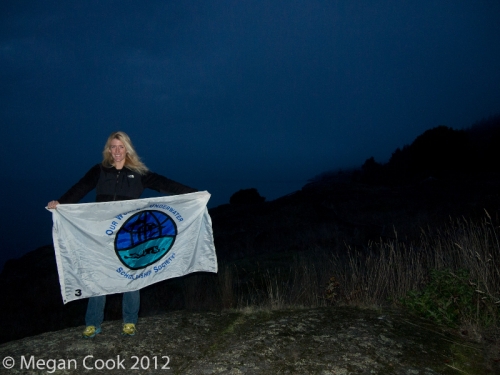
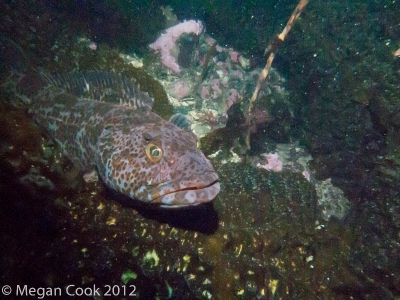
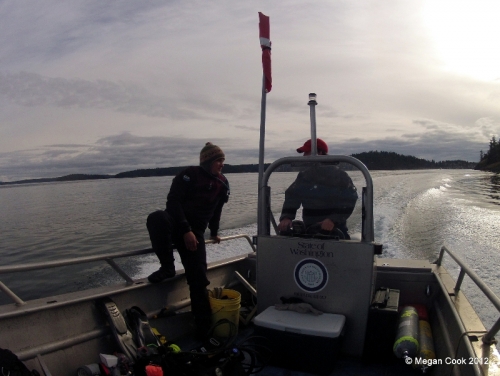

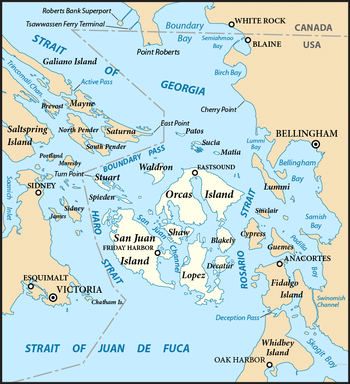
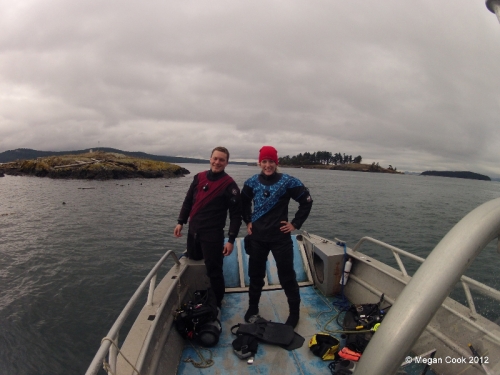
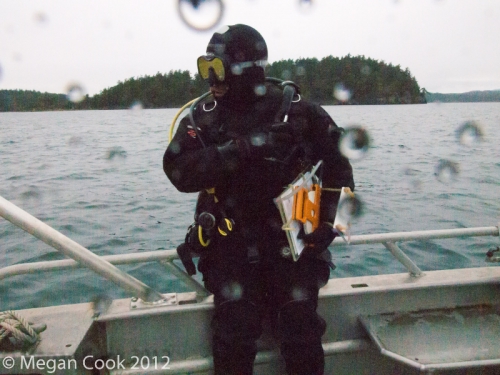
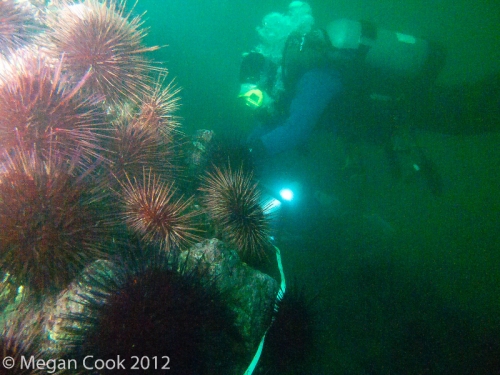
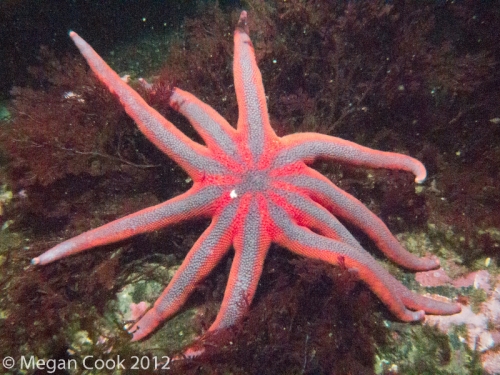
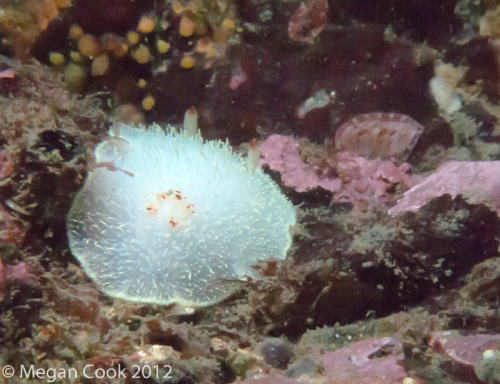
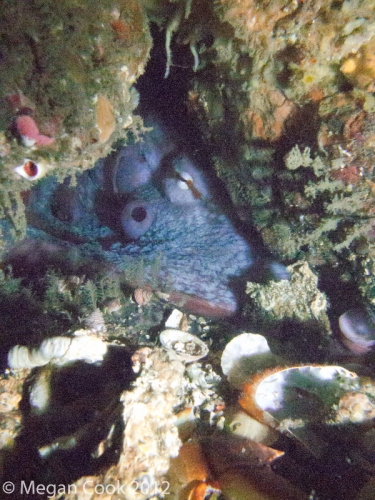
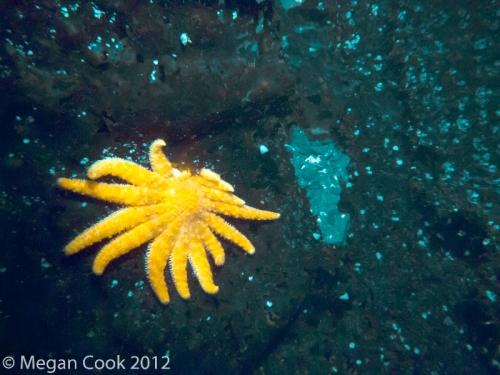
Megan,
Thanks for hooking up with Annie Thomson, I’m glad the two of you got to spend some time together.
Nate